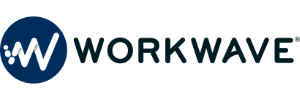Mergers and acquisitions have been on the rise in field service industries for years, with no signs of slowing down any time soon. With pest control and lawn care business owners looking to sell their operations in record numbers, it’s easy to see why M&A was top of mind for so many attendees at WorkWave’s 2025 User Conference.
To dive deeper into this hot-button topic, we invited a panel of experts to explore the core elements they center on when considering a potential acquisition. Read on for firsthand insights from Jordan Cano, VP of M&A at Senske Family of Companies; Mike Givlin, President of Pest and Lawn at Ned’s Home; and John Moehn, President of Experigreen Lawn Care, as they cover what matters most to private equity (PE) firms, how you can position your business to be more attractive to potential buyers and investors, and the importance of clean data.
Building on a Family Foundation
Many budding field service businesses are built on a foundation of intimate, personalized customer care. While this is particularly predominant in family-owned businesses, it’s also true of just about any field service operation that’s focused on putting customers first and maintaining a mom-and-pop feel.
Cano notes that the family-owned aspect can make a business unique from a PE firm’s perspective; it can also be hard to maintain. As a result, familial ownership can be a pro or a con, depending on the PE firm involved. From the seller’s perspective, though, that initial connection can help to ensure a potential buyer shares their goals and values. Cano goes on to note that Senske’s Family of Brands approach is designed to allow acquisitions to continue delivering a personalized feel in their local market; the biggest change, in some cases, is simply getting them on the same software and reporting platform so they can run efficiently as part of the larger business.
Givlin seconded the importance of integration, pointing out that due diligence is crucial in determining what an acquisition company values. By ensuring valued elements of the business-employee relationship are maintained — whether it’s a beloved holiday party or golf outings to reward top performers — PE firms can minimize employee turnover to help ensure customers receive the same mom-and-pop service quality they’re accustomed to for a consistent experience.
In an industry built on a foundation of entrepreneurs, Moehn points out, it’s crucial for firms to recognize all that goes into starting and building not just a company, but a company culture. As he points out, that company culture can be a huge source of what makes the company valuable; people are the most important investment.
Tend to Your Tech Stack
Whatever the size of your business, the way you collect, organize and store your data matters to potential investors; pencil and paper methods don’t make for organized acquisitions or easy transitions. As Moehn points out, industries like pest and lawn are highly transactional, which means a lot of data — especially as you add locations.
“There’s a lot of data that gets brought into the business, and we can’t make decisions if we don’t have good data that we’re looking at.” – John Moehn, President of Experigreen Lawn Care
Managing that sort of data, he says, relies on software, analytics and ultimately consolidated reporting in order to really understand the data and use it to drive decisions. He adds that understanding finances, payroll and employee benefits is easier when it’s all in one place. Using common software across the board makes a business more attractive to potential investors as well.
Givlin agrees, adding that the extremely data-driven nature of PE means having a solid tech stack and clean historic data is crucial. PE firms want to understand a business in ways current owners may not be considering, but clean data ensures the relevant information is available when it’s needed. His own business employs PestPac for pest and RealGreen for lawn; beyond ensuring businesses in both industries have everything they need to manage industry-specific metrics and data, he points out that the two elements of the business are better connected through WorkWave’s solutions.
Access to data, Cano agrees, is the place to start — from there, it’s about understanding it. PE groups want to know anything and everything about a business, he says, so knowing where you stand on info and data is important. WorkWave’s valuation reports put all of that front and center, differentiating potential acquisitions from the pack.
“Making sure you’ve got a clean tech stack, that you’re maintaining your data, keeping your records up to date — all this stuff is just so important when you go to sell.” — Mike Givlin, President of Pest and Lawn at Ned’s Home
Who Are PE Groups Targeting?
With so many businesses competing to be purchased, many attendees asked panelists if they could hone in on their ideal target for acquisition. For Cano, it comes down to growth, whether that’s top line or profitability. When looking at profitability, he’s looking at how much is going back into the bottom line.
He also stressed retention of both customers and employees, with employee retention being the top priority of the two. Moehn agreed with that prioritization, adding that smaller businesses who aren’t tracking their employee turnover or customer sentiment need to start. Monitoring and working to improve online reviews is crucial, as is getting field employees to request them. He goes on to add that rewarding performance through apps like Applause is worthwhile for the impact it has on morale and retention.
Beyond growth and retention, Givlin points out that while termite and general pest management are both viable — assuming they’re recurring — some backers might have a preference or even not do business with one particular subset at all. He spoke to the importance of recurring revenue and revenue per tech, as well as customer concentration. If a business gets 40% of its overall business from 20% of its customer base, for instance, it can be a risky investment. Similarly, he recommends pest businesses get upwards of 80% of their revenue from pest services — as opposed to supplementary services like dehumidification, insulation installation or wildlife removal — for a good concentration.
Putting Value First
When asked whether investors are looking for businesses that fall into a particular sweet spot in terms of size — whether it’s revenue or employee count — the entire panel agreed unanimously: it depends on the PE group.
Moehn elaborated, noting that trying to nail down a perfect size for a new branch in an existing service area vs. an acquisition in a new region is like comparing apples and oranges. When entering a brand new market, they might look for businesses with at least a few million in revenue, for instance, while acquiring a business with $200-600k in revenue can be extremely worthwhile if it’s in an area you’re already operating.
While Givlin agreed that he sees smaller deals as a great way to build density, he noted that they’re approached differently, even as early as when completing due diligence. Platform acquisitions — those that provide a platform for entering into a new territory or area — generally show revenue of over $10 million, allowing for an aggressive entrance into a new market. Between the two, $3-5 million businesses are typically sized appropriately to launch a new branch, providing a solid base to build on with support from existing platform businesses.
Cano seconded Givlin’s take, highlighting the $2-5 million range as a sweet spot not just from the acquirer’s viewpoint but often from the seller’s, as well. He points out that field service operations of that size often tend to plateau without significant investment to achieve the next level; as a result, they often look to sell — either into a partnership or in order to exit the business entirely — rather than undertaking that step themselves.
Top Takeaways for Potential Sellers
For those who might be looking to sell their business, whether in the near future or further down the road, the top piece of advice was the same across the board: keep your data clean. The panel stressed the importance of data organization time and time again, encouraging field service business owners to ensure they’re using software to the fullest.
“Coming at it from the acquisition side, you have to be able to make sure you really understand the data you have … A lot of the tools and reports that are provided [through WorkWave] are really important.” — Jordan Cano, VP of M&A at Senske Family of Companies
For WorkWave users, valuation reports are available within PestPac’s software to help provide a closer look at overall value, both for owners and for potential investors carrying out due diligence. This provides a much more accurate estimate than traditional formulas, which typically call for a business’s EBITDA to be multiplied by a particular factor; Moehn says there’s no simple formula, having seen completed deals with figures covering a range as wide as between 4X and 20X EBITDA.
For those thinking of selling, the panel encouraged contacting a PE firm to conduct an actual valuation. Even for those not yet ready to sell, they pointed out, most firms are happy to provide a valuation early on, especially if it benefits small businesses in the region. As Cano points out, it never hurts to ask; PE firms aren’t looking to sell owners on selling their businesses, they just want to find the best fit for their next acquisition.




